SAIL TO THE HORIZON:Islamic Inspiration in the 15th century
National Palace Museum Current
The paradise on the horizon, known as the Makkah nowadays, is also the origin of Islam. In the 15th century, Zheng He (1371-1433) led the expeditions crossing the Southern seas and the Indian Pacific and reached paradise at the last of his seven voyages. Where had they been? How did the event influence the Royal and the public? This exhibition aims to discover the cultural and artistic value of this grand event. The exhibition is in four chapters. The first ” Search of Qilin” explores the background of that time through the journey of Zheng’s fleet that visited Bengal and accidentally brought back a giraffe. The second “Trend from the Horizon” aims to investigate the embedded Islamic elements from the vessel type, glaze and decoration on the official ware porcelains. The third “Imperial Expression” focuses on objects exporting back to the Islamic world from China. The final “Everlasting Resonance” demonstrates the Islamic influence continuously resonating in the Imperial palace and local public.
In Search of Qilin
“Qilin” as the symbol of prosperity, it is believed that marine adventurers had searched for this mythical creature in the 15th century. Numerous names were used to call qilin, “cu la” in the Southern Song dynasty and “zu la fa” in the Ming dynasty. In fact, the name of this animal originated from the Arabic “Zarafa”, which is “Giraffe”. This journey in searching for the giraffe allows the encounters between the East and the West.
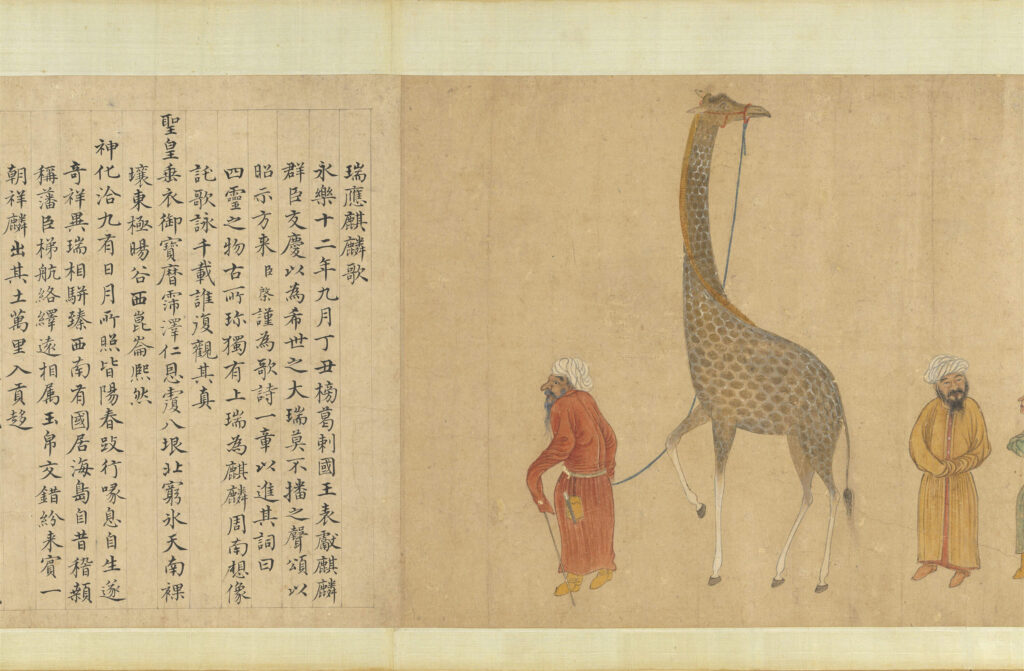
Ming dynasty (1368-1644)
The ambassador of King Bengal (now Bangladesh region) offered a “qilin” as a tribute to the Emperor at the 12th year of Yongle reign (1414). The presence of “qilin” suggested the prosperous blessing, which encouraged numerous documents to celebrate this moment. Judge by the painting, the “qilin” is surprisingly a giraffe from Eats Africa.
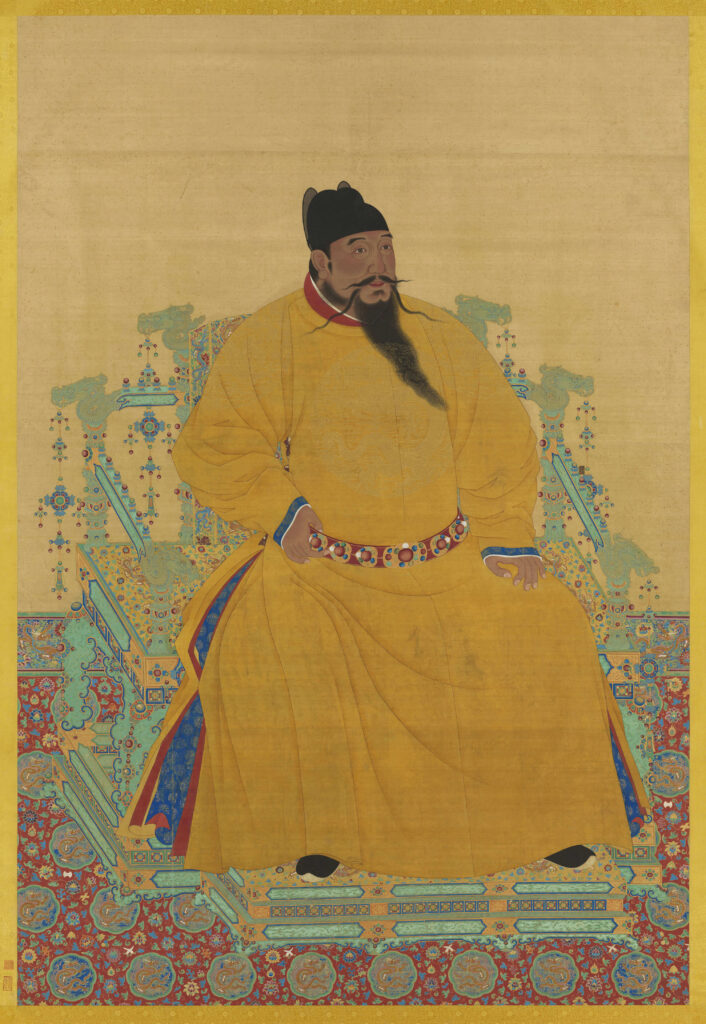
Emperor Yongle had ruled from the year 1402 to 1424. The Empire thrived under his governance. Yongle had sent Zheng He on expeditions that began the extraordinary exchanges between East and West in the 15th century.

“Suanni” is the old name of lions, it could be a transliteration from a foreign language since lions do not exist in China. The foreign tributes of lions were frequent during Yongle and Xuande reigns, and the offer stopped. Until the Chenghua to Hongzhi period, Samarkand then offered a lion as tribute.
Trend from the Horizon
The interaction between the Ming court and Islamic world in the 15th century resulted in the further blends shown in the visual and material culture. The imitation of appearance, spread of decoration, changes of size and development in glaze, all of them reflect the foreign influence and interactions.

A vase with long neck and globular body is known as celestial globe vase. This type of vase was created around 1425, was once sold to the Islamic world, and became part of the royal collections of Turkey and Iran.
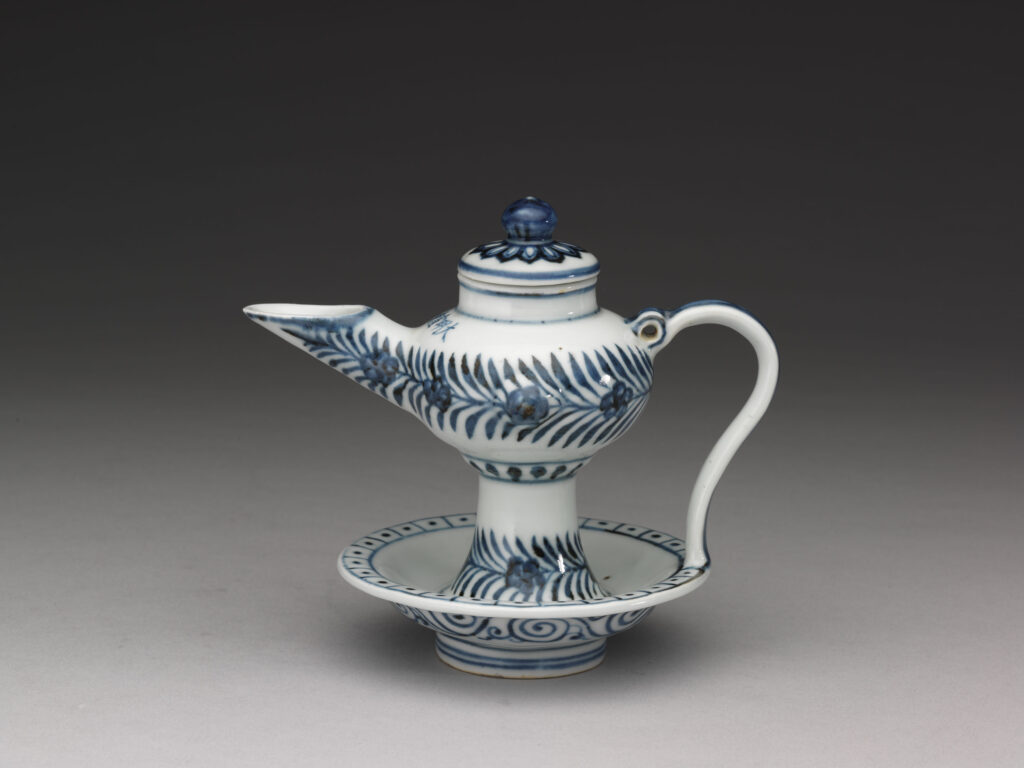
The lamp resembles the enchanted lamp of Alaeddin. Zheng He’s fleets had visited several Islamic countries, and also thousands of pottery lamps were excavated in Fustat, Egypt. Therefore, this type of porcelain lamp with handle and saucer could be considered an outcome of the interaction between Central and Western Asia in the 15th century.

This shape is influenced from the Central and Western Asian pottery and glass ware. The five figures have foreign appearnace and clothing. The origin of this arrangement can possibly be found in the miniature paintings.
Imperial Expression
The Islamic world collects many fine porcelain collections from Jingdezhen, including the coloured paper with gold colour for the Quran and the Chinese style images depicted in the miniature paintings. These examples present the strong influence of Chinese materials and images on the Islamic art.
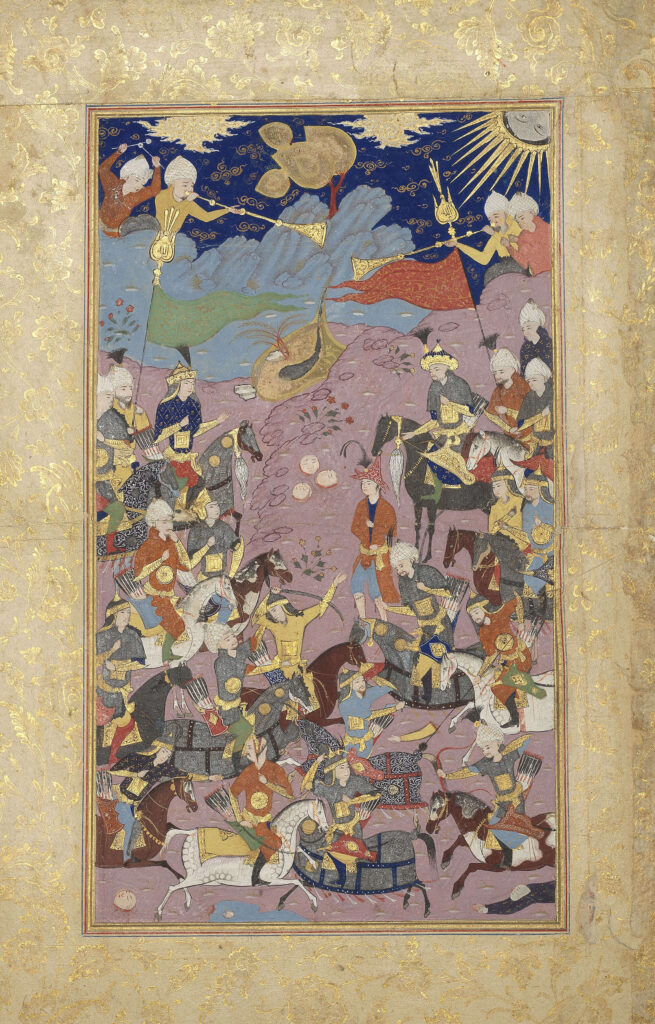
Although this miniature depicts a battle scene in the Islamic world, the motifs such as clouds reveal the trace of Chinese artistic influence on Central and Western Asia.

Shen Zhou depicts the cat in a round composition. Similar image is also shown in the album of Tokapi Palace in Turkey. It obviously reflects the Islamic artists’ interest in the style of Ming dynasty.
Everlasting Resonance
The interaction of the 15th century arouses the Chinese sponsors and craftsmen’s interest in Islamic style. Even in the 16th and 17th centuries, the trend was not decreased and the oversea trades were continued. The decoration on artworks still reflected the style of the Ming intertwined with the Islamic world.
-674x1024.jpg)
Scholars are playing go in front of a screen in a garden with green plantain, red pomegranates and unusual shaped rocks. The tea and wine vessels on the jade table are similar to the artifacts from the tomb of Prince Chuang of Liang (1411-1441). The porcelain seat is similar in shape to those in the National Palace Museum collection. They present the luxurious life in the 15th century.

The body in a crescent-moon shape is what makes this water vessel special. The crescent moon represents the power of rebirth in Islamic doctrine. This form is particularly created for the Islamic world in the 16th century.

Cloisonné is said to be introduced to China through the Arab world from Byzantium in the Yuan dynasty (1279-1368).
This vessel was created by combining and remodifying cloisonné vessels of the different periods by the craftsmen of the 17th century.
2021/10/26-2022/01/26

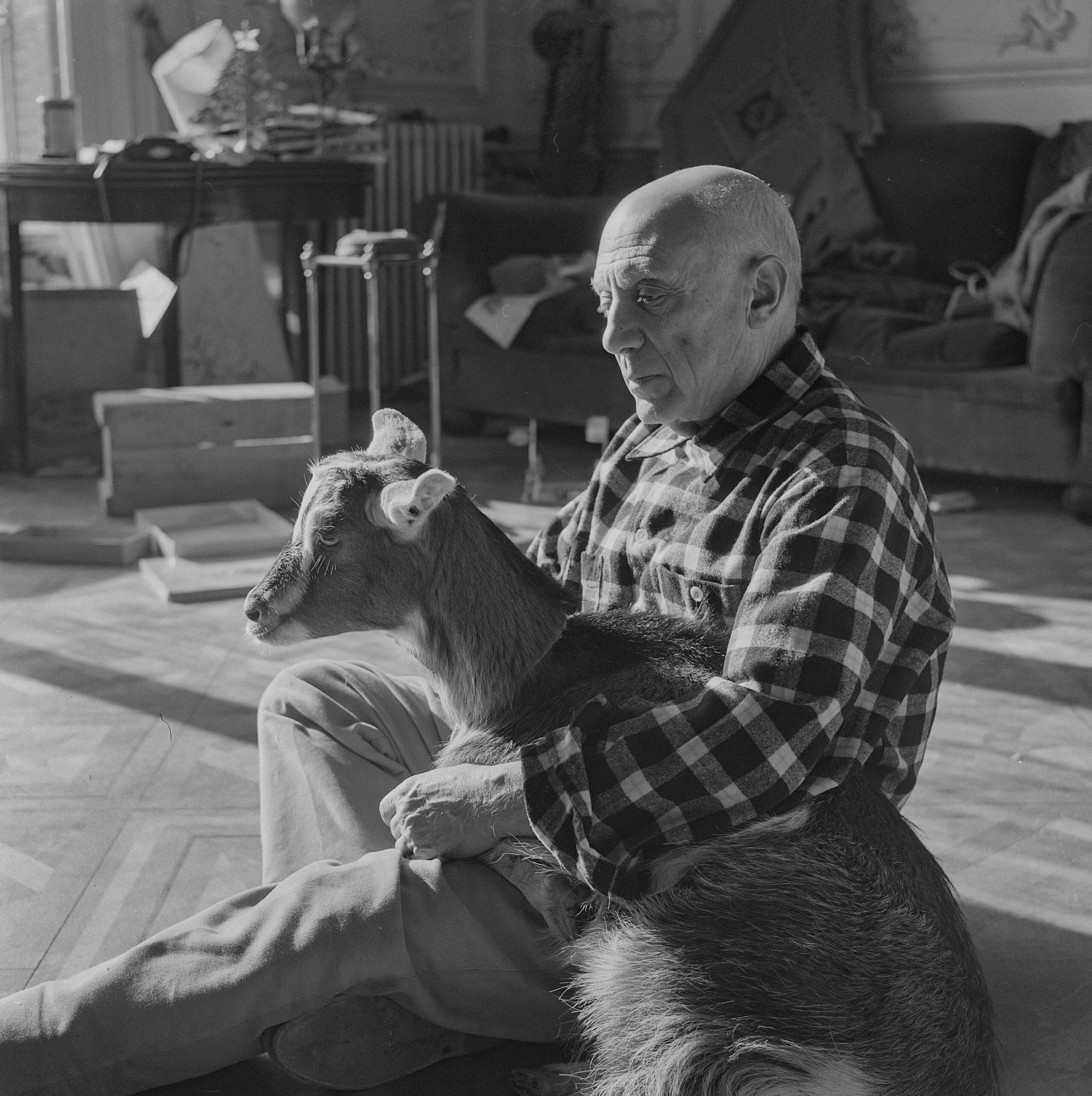

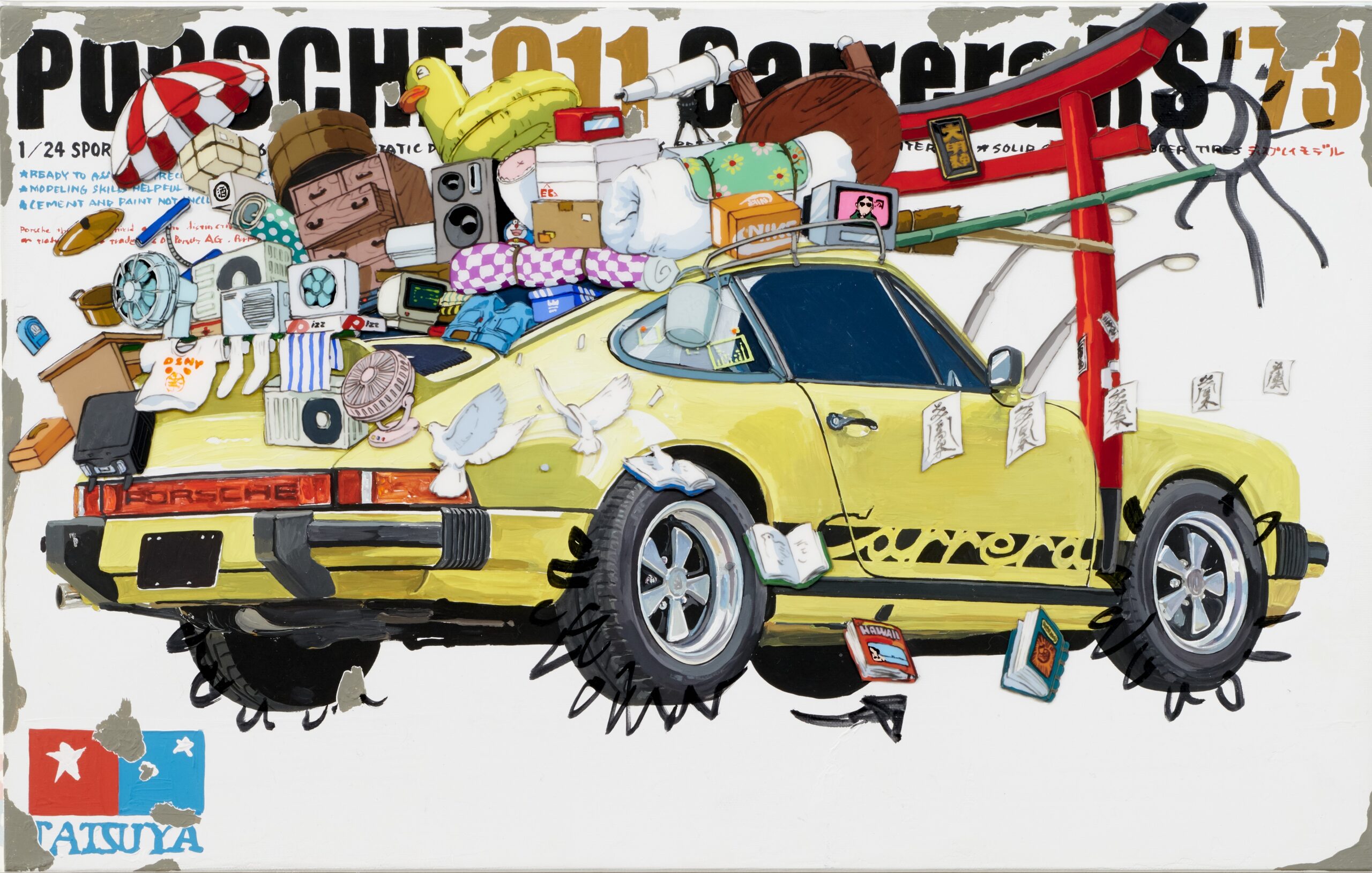
©忠泰美術館-1.jpg)